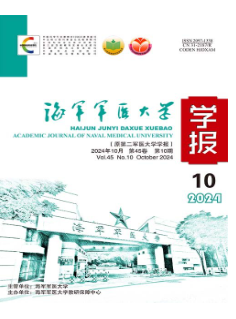Stateflow and queuing theory-based design of emergency medical rescue simulation system
Q4 Medicine
引用次数: 0
Abstract
Objective To design an emergency medical rescue simulation system,and to provide reference for optimizing rescue strategy and medical resource allocation by simulating different rescue conditions.Methods Firstly,Stateflow was used to build the main simulation unit,which included arrival of the wounded,classification of the wounded(emergent[type A]and non-emergent[type B]),and medical treatment modules,and then the related event and response function were appended.Secondly,the system parameter input unit and character display unit were set up in Simulink.Finally two different medical treatment strategies(strategy 1:type B wounded waiting for treatment in the rescue module with least waiting patients;strategy 2:type B wounded waiting for treatment in the rescue module with least workload)were simulated and the corresponding rescue strategies were analyzed.Results The system could simulate the medical rescue process of different strategies.The type A wounded could be rescued in a timely manner in both strategies.Type B wounded had a shorter waiting time in strategy 1,but the rescuers had a heavy work load;while they had a longer waiting time in strategy 2,and the rescuers had a lighter work load.Conclusion We have successfully designed a simulation system for emergency medical rescue and its feasibility and effectiveness are verified.Different rescue strategies have their respective advantages and disadvantages in the waiting time and work load,and the two strategies can be combined in practice in order to achieve a dynamic balance between the waiting time of the wounded and the work load of the rescuers.基于状态流和排队理论的紧急医疗救援仿真系统设计
目的设计应急医学救援模拟系统,通过模拟不同的救援条件,为优化救援策略和医疗资源配置提供参考。方法首先利用statflow构建伤者到达、伤者分类(急诊[A类]和非急诊[B类])、医疗模块等主要仿真单元,并附加相关事件和响应函数。其次,在Simulink中建立了系统参数输入单元和字符显示单元。最后对两种不同的医疗救治策略(策略1:B类伤员在候诊患者最少的抢救模块中等待治疗;策略2:B类伤员在工作量最少的抢救模块中等待治疗)进行了仿真,并对相应的救治策略进行了分析。结果该系统能够模拟不同策略下的医疗救援过程。两种策略都能及时抢救A类伤员。策略1中B类伤员的等待时间较短,但救援人员的工作量较大;策略2中B类伤员的等待时间较长,但救援人员的工作量较轻。结论成功设计了一套应急医学救援仿真系统,验证了系统的可行性和有效性。不同的救援策略在等待时间和工作量上各有优缺点,在实践中可以将两种策略相结合,实现伤员等待时间和救援人员工作量的动态平衡。
本文章由计算机程序翻译,如有差异,请以英文原文为准。
求助全文
约1分钟内获得全文
求助全文
来源期刊

海军军医大学学报
Medicine-Medicine (all)
CiteScore
0.50
自引率
0.00%
发文量
14752
期刊介绍:
Founded in 1980, Academic Journal of Second Military Medical University(AJSMMU) is sponsored by Second Military Medical University, a well-known medical university in China. AJSMMU is a peer-reviewed biomedical journal,published in Chinese with English abstracts.The journal aims to showcase outstanding research articles from all areas of biology and medicine,including basic medicine(such as biochemistry, microbiology, molecular biology, genetics, etc.),clinical medicine,public health and epidemiology, military medicine,pharmacology and Traditional Chinese Medicine),to publish significant case report, and to provide both perspectives on personal experiences in medicine and reviews of the current state of biology and medicine.
 求助内容:
求助内容: 应助结果提醒方式:
应助结果提醒方式:


